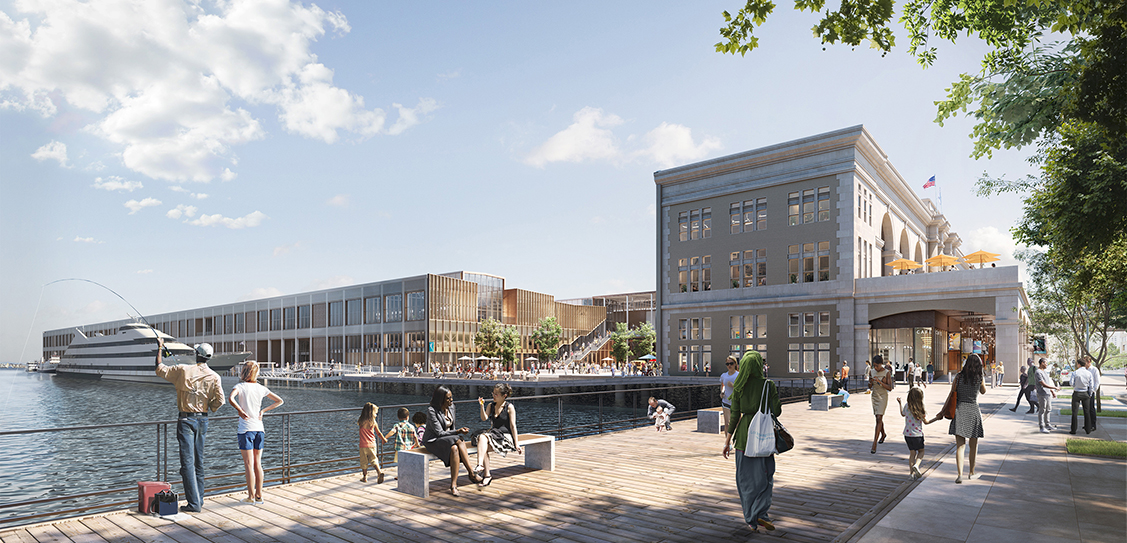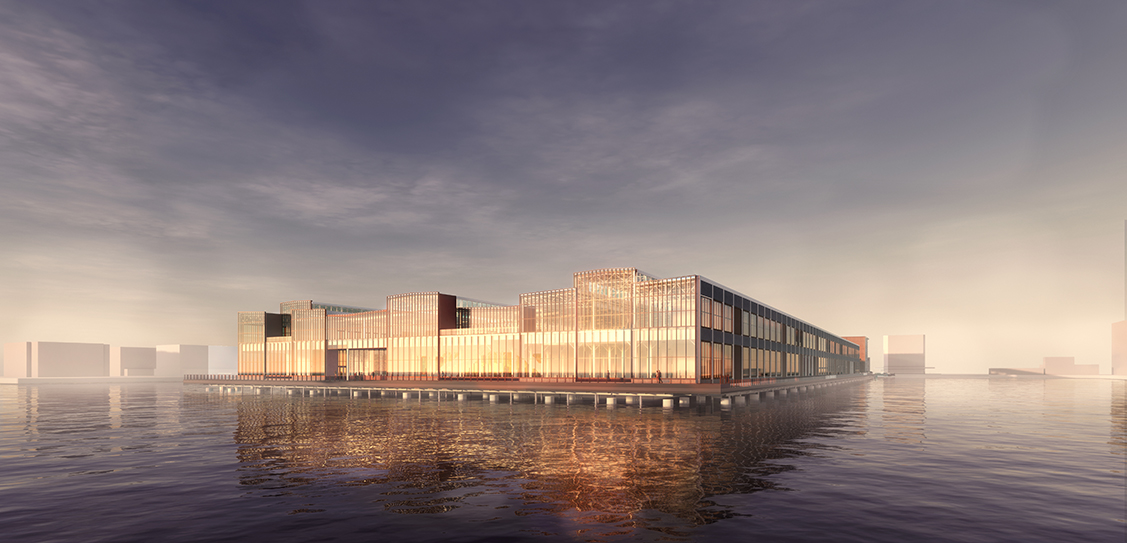The readaptation includes a public plaza, an enhanced Harborwalk, retail, and first-class Seaport Hotel event and meeting spaces, as well as a unique, flexible workplace.
Honouring the site’s historic integrity while also introducing new materials, increasing daylight, and providing new points of connectivity, were kept in mind. Commonwealth Pier was built more than a century ago and was formerly the largest of its kind in the world. The revitalisation project, which is targeting LEED Gold Certification, incorporates advanced design strategies for resilience and sustainability to ensure the pier’s continued enjoyment for generations to come.
Schmidt Hammer Lassen’s design of the site includes enhanced outdoor spaces and public amenities, including courtyards, walkways, green spaces, and a grand waterfront plaza. The plaza will become the pier’s central gathering point, providing a flexible outdoor space for year-round activities. It will feature tree plantings, custom seating, and areas for moveable tables and chairs.
The Harborwalk, a popular and paved pedestrian path along Boston Harbor, runs along the site’s perimeter and views to downtown Boston, East Boston, and the Boston Harbor. There, too, Schmidt Hammer Lassen designed spaces to accommodate custom seating, integrated planters, and outdoor lighting, all of which will allow for a dynamic visitor experience. Niches in the building’s façade will provide additional public seating, shaded areas, and connectivity to retail and dining.
Schmidt Hammer Lassen’s design intent for Commonwealth Pier is to preserve the building’s unique heritage while making it a highly attractive modern day destination. The stone arches and cornice of the historic neoclassical headhouse will remain intact. The façade of the building’s northern extension will include exposed columns and column connections from the original structure. With the introduction of curtain walls and other lightweight materials, the building will integrate efficiently into its neighbourhood context.



